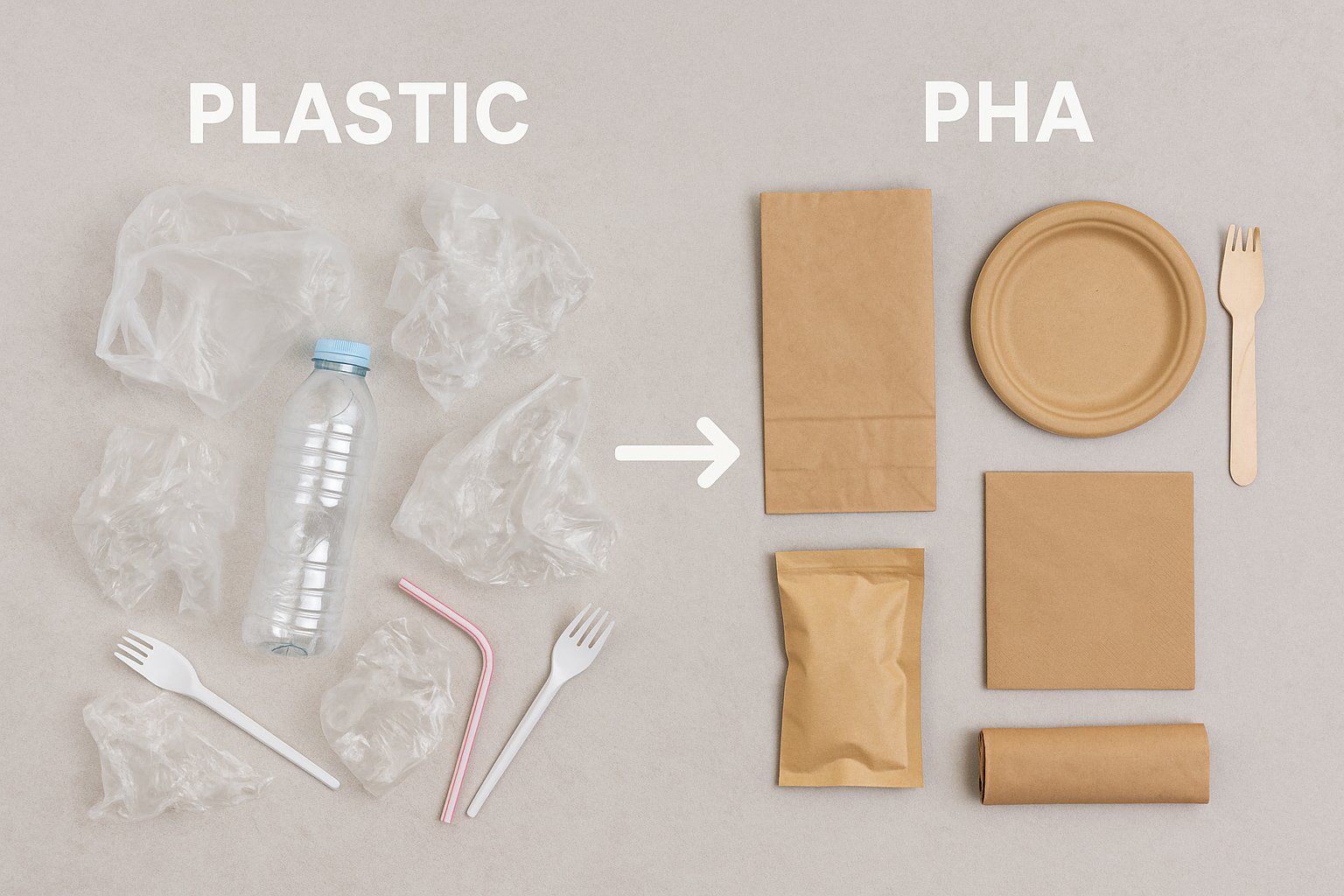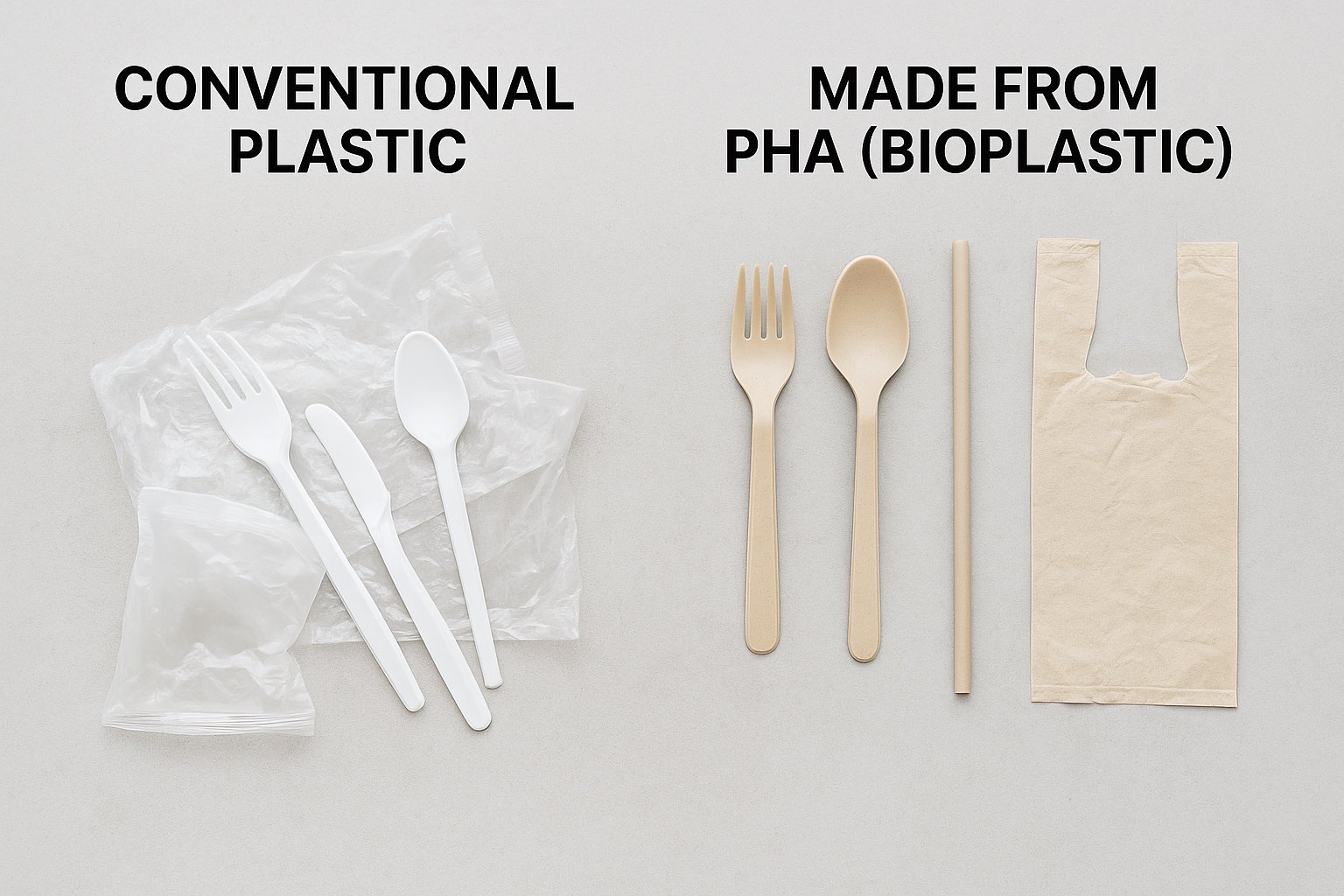Plastic pollution is one of the most pressing environmental challenges of our time.


🌱 What is PHA?
PHA is a naturally occurring biopolymer produced by bacteria when fermenting plant-based sugars or oils. Unlike conventional plastic, which is derived from fossil fuels, PHA is 100% biodegradable and breaks down into organic matter without leaving behind harmful microplastics or toxins.
💡 Key Features of PHA:
✅ Biodegradable in Nature – Breaks down in soil, water, and even marine ecosystems.
✅ No Microplastics – Fully decomposes into CO₂, water, and biomass.
✅ Made from Renewable Resources – Produced from plant-based materials, reducing dependence on petroleum.
✅ Durable Yet Sustainable – Functions like plastic but naturally decomposes when discarded.
PHA is proof that sustainability and functionality can go hand in hand. 🌍♻️
🌍 The Problem with Traditional Plastic
Most conventional plastics are made from petroleum-based polymers that take hundreds of years to break down. Even when they do, they fragment into microplastics that persist in the environment, polluting water sources, food chains, and even the human body.
Plastic Pollution Has Reached Crisis Levels:
🚨 Over 400 million tons of plastic are produced every year.
🚨 Only 9% of plastic waste is properly recycled.
🚨 More than 14 million tons of plastic end up in the ocean annually.
The solution isn’t just reducing plastic use—we need to replace plastic with a truly sustainable alternative. That’s where PHA comes in. 🌿♻️
🔬 How PHA Stands Out: A True Circular Economy
PHA is often compared to other biodegradable plastics like PLA (Polylactic Acid), but there’s a crucial difference:
| Feature | PHA ✅ | PLA ❌ | Conventional Plastic ❌ |
|---|---|---|---|
| Biodegradable in nature? | ✅ Yes (in soil, water, and oceans) | ❌ No (requires industrial composting) | ❌ No (persists for centuries) |
| Made from renewable resources? | ✅ Yes | ✅ Yes | ❌ No (fossil fuels) |
| Breaks down into microplastics? | ❌ No | ✅ Yes (under certain conditions) | ✅ Yes |
| Compostable at home? | ✅ Yes | ❌ No | ❌ No |
| End-of-life result | 🌱 Returns to nature | 🏭 Requires industrial composting | 🏭 Persists in the environment |
PHA has the potential to revolutionize industries that rely on single-use plastics—from packaging and food containers to medical products and even biodegradable umbrellas like the ones we create at Greenstart. 🌿♻️
☔ How Greenstart Uses PHA for a Greener Future
At Greenstart, our goal is to develop a fully biodegradable umbrella. Our top priority is using 100% kraft paper, but if structural components like the handle or frame require extra durability, we choose PHA over traditional plastic.
Why PHA?
✅ Provides durability while ensuring all parts of the umbrella naturally break down after use.
♻️ Eliminates petroleum-based plastic from our design.
🌊 Prevents microplastic pollution, protecting ecosystems.
🌿 Creates a product that aligns with true sustainability.
PHA is more than just a plastic alternative—it’s a revolutionary material that can help eliminate plastic pollution across multiple industries.
💡 The Future: A Plastic-Free World with PHA
PHA is still in its early stages, but it has the potential to transform the way we produce and dispose of everyday products. By supporting PHA-based solutions, we can:
🌍 Drastically reduce plastic waste in landfills and oceans.
💚 Support the transition to a circular economy, where products return to nature.
🚀 Encourage innovation in biodegradable materials for a cleaner future. for a cleaner, waste-free future.
PHA isn’t just the future—it’s the solution we need today. 🌱♻️

